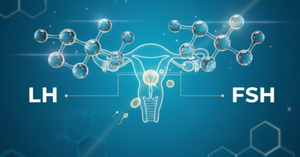Breast tenderness, also called mastalgia, is a frequent concern among women of reproductive age. It may present as heaviness, swelling, or sharp pain in one or both breasts. While often benign and hormonally driven, persistent or unusual pain requires medical evaluation to exclude underlying pathology.
The most common type is cyclical mastalgia, directly related to hormonal fluctuations across the menstrual cycle:
Non-cyclical mastalgia may occur independent of the menstrual cycle. It is less common and may result from localized breast conditions, musculoskeletal strain, or certain medications (eg, hormonal therapy, antidepressants).
While most breast tenderness is benign, evaluation is advised if pain is:
Clinical assessment may include breast examination, imaging (ultrasound, mammography depending on age and risk), and review of medical history.
Breast tenderness is a common, usually benign symptom associated with hormonal changes of the menstrual cycle. Lifestyle adjustments, nutritional support, and simple analgesics often provide adequate relief. Persistent, localized, or unusual breast pain should prompt medical evaluation to rule out underlying pathology.
About PeriodSakhi
PeriodSakhi is your trusted companion for understanding your menstrual health. With easy-to-use tools, it helps you track your periods, ovulation, fertility, moods, and symptoms, while providing insights into your overall reproductive and hormonal health. PeriodSakhi also serves as a supportive online community where women can share experiences, find reliable information, and access expert-backed guidance on menstrual health, PCOS, pregnancy, lifestyle, and more.
Disclaimer
The views, thoughts, and opinions expressed in this article/blog are solely those of the author and do not necessarily reflect the views of PeriodSakhi. Any omissions, errors, or inaccuracies are the responsibility of the author. PeriodSakhi assumes no liability or responsibility for any content presented. Always consult a qualified medical professional for specific advice related to menstrual health, fertility, pregnancy, or related conditions.
Start the conversation
No comments yet. Start the conversation by leaving the first comment!





